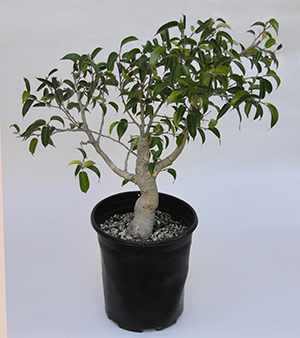Basics of Design
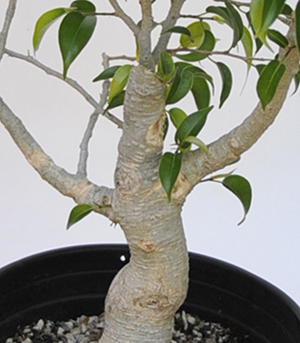
Computer Designs
by Lew Buller
Never could draw. When my bonsai instructors told me to draw a picture of the future tree I was working on, it came out like a kindergartner’s. I can, however, operate a computer mouse and a few basic skills have enabled me to use Photoshop to see what a future tree might look like.
Mostly I use cloning, either from one part of a photo to another, or from a copy saved before changes to the copy that I am making changes to.
After saving a digital copy from my camera to the computer, the first step is to size the photo. I set my dpi at 300 for this step; that’s the size generally used in magazine articles. After saving the 300dpi copy, I change the dpi to 150 as this size can be sent email without creating a humongous file and slowing down the computer. Saving a master at 300dpi enables me to start over if I make an uncorrectable mistake; the working copy will have a different name. If I have several photos on a specific topic, I create separate folders for the 150dpi and the 300dpi copies.
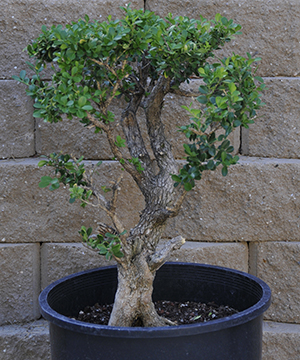
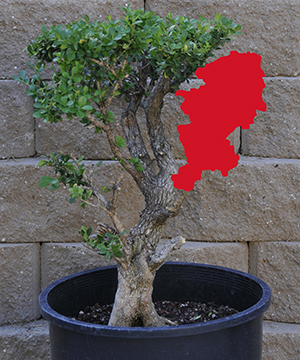
While corrections to color, lightness and contrast, and background can be made in the computer, it’s better to start with the best photo possible. You might think concrete blocks make for a difficult background, but their irregular surface clones easily. Using the eyedropper tool, I picked red to replace temporarily the part of the tree I intend to remove.
The quick selection tool enabled me to identify the parts of the photo I wanted to remove and the paint bucket tool applied the temporary color. Go slow with the paint bucket tool; if you make a mistake, you can back up using the undo menu. Better yet, save the file after you have completed a few steps successfully; you can immediately go back to the last version.
Look carefully and you will see that part of the trunk was also removed. Not to worry; bark can be cloned. Speaking of bark, a student taught me a trick. If bark comes off a tree where bark is important, glue it back on with waterproof glue. You can do the same thing to cover up places where branches have been cut off flush with the tree. I carry an old prescription bottle where I save bark from cut off branches.
Sometimes the first try is not satisfactory, so I go back to the figurative drawing board. Or, in this case, the tree is not mine but that of the Apprentice so I gave him two alternatives to see if one of them was right for him. The tree is telling us to take advantage of the two major curved branches.
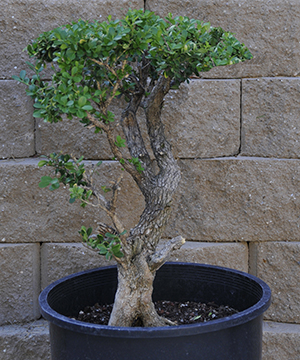
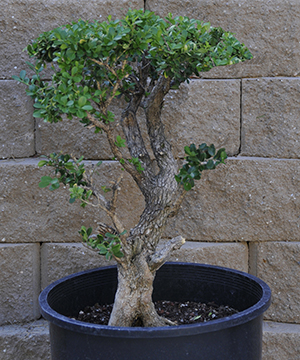
While I was at it, I took a little off the top, to give it a slightly rounded canopy. It did, however, look a little naked on the right side, so I decided to add a skirt branch. The skirt branch does not need to follow the rule that the lowest branches on trees should be the largest. Man or woman, if you’ve ever looked at an attractive skirt, you can understand how it complements the design. So I cloned a skirt branch back on. Whenever my arborist friend and I cut off the lower branches around the periphery of a tree, the arborist’s terminology was “raising the skirt.”
My first efforts at computer design were more simplistic. After taking my ficus saikei apart, I was left with a large number of ficus that did not look good as self standing trees. What better way to test them than by computer?
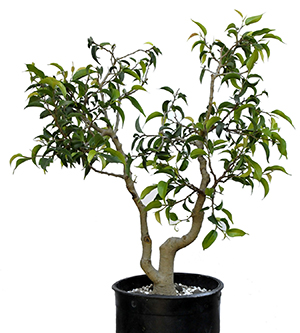
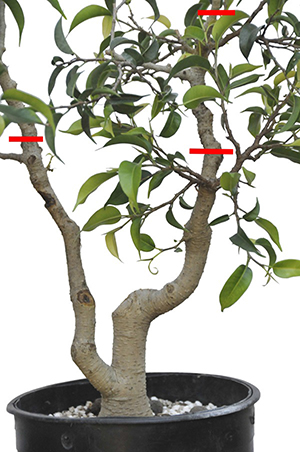
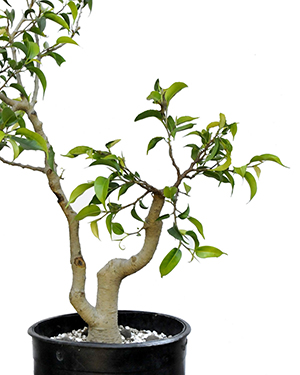
(l to r) Twin trunk ficus ; Too-tall trunks; Photoshop shortened
Both trunks on a twin trunk bonsai do not necessarily have to start at ground level. A low-growing branch can be developed to become a second trunk. This tree needs to be shortened to bring the trunk and foliage into better proportions.
The trunks can be shortened by cutting back to various lower branches; three potential cuts are shown. The larger trunk is the more interesting to me so I used computer software to see how that trunk would look if it were shortened to the lower set of branches. It looks good to me that way, but I will not cut the top off, I will air-layer it off. The left trunk is too thin and has very little lower foliage, so I won’t cut it back.
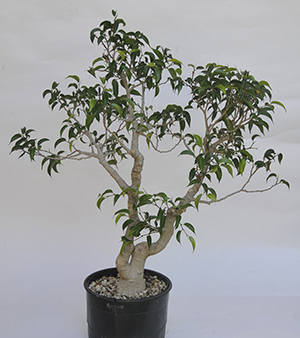
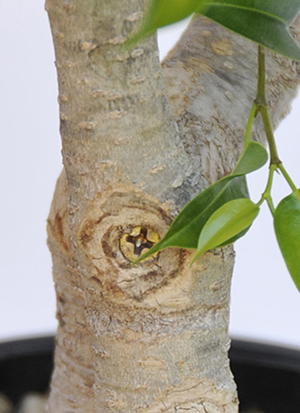
In 2013, I decided to fasten the two trunks together with a brass screw. That left a hole between the two trunks and violated the rule that trunks once separated should never be brought closer together. That’s all right; it’s my tree and I’m the only one who sees it. In September 2014, the cambium was starting to cover the brass screw head.
You may have guessed by now that I like gnarled, curved trees, preferably with short, heavy trunks. My observation is that it takes about 10 years for a tree to grow to the point where it needs a major design change. Since most of my other bonsai were too far along toward their final design to make any major changes, I resorted to ficus again.
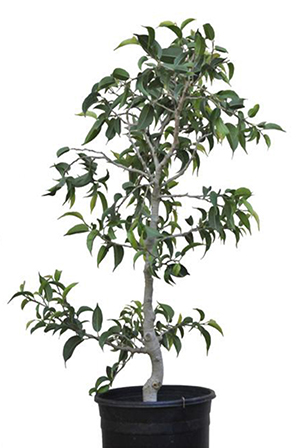
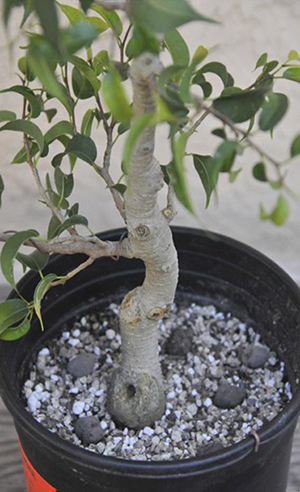
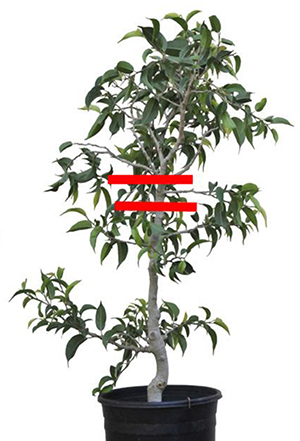
(l to r) Tree with twisted trunk; Base of trunk; Possible cuts
As lower branches developed, I chose a front for the tree and gradually reduced the central leader. It shows in a close-up. What now appears to be a central leader is a back branch coming up behind the stub. In time, the stub will be removed completely and the right-hand branch will continue the very curvy line of the trunk. The stub will die back completely and can be removed at the beginning of the next growing season, in 2015. The design is working better than I anticipated.
